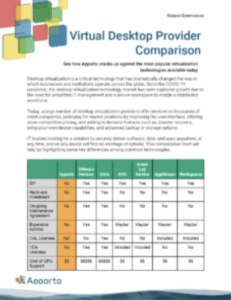Data Privacy in Higher Education: Ensuring Security in a Connected World
In today’s interconnected world, data privacy has become an issue of utmost importance, especially in higher education institutions that handle sensitive information belonging to students, staff, and faculty members. With the rise in cyberthreats and the increasing use of technology, ensuring data security has become more crucial than ever before. In this article, we will discuss the importance of data privacy in higher education, the challenges it poses, and how institutions can implement a comprehensive data privacy strategy to protect their information.
The Importance of Data Privacy in Higher Education
Students, staff, and faculty members trust higher education institutions to keep their sensitive information safe and secure. This trust is essential in creating a positive institutional reputation and maintaining ongoing relationships with stakeholders. Data breaches can result in reputational damage, heavy financial losses, and legal consequences. It is, therefore, essential for higher education institutions to prioritize data security and invest in the resources necessary to keep their information safe from unauthorized access.
Protecting Student Information
The personal information of students, including social security numbers, academic records, and financial information, is often stored on institutions’ servers. Therefore, higher education institutions must implement measures to protect this information from unauthorized access. Institutions should utilize encryption methods to secure sensitive data and ensure that access to this data is limited to authorized personnel only. Moreover, institutions must be vigilant in responding to any data breaches or cyberattacks to ensure that the stolen information does not fall into the wrong hands. In addition to these measures, higher education institutions must educate their students on data privacy issues and provide them with the necessary tools to protect their personal information.
Safeguarding Faculty and Staff Data
Staff and faculty members also provide personal and sensitive information to higher education institutions, such as their bank account details, tax forms, and health records. Therefore, institutions must ensure that this information is protected from unauthorized access and is only accessible to authorized personnel who need it for their job functions. Institutions should provide their staff and faculty members with regular training on data privacy issues and ensure that they are aware of the institution’s policies and procedures regarding data security. Additionally, institutions must have a clear protocol in place for reporting and responding to any data breaches or cyberattacks involving faculty and staff data.
Preserving Institutional Reputation
Higher education institutions hold a position of trust in the eyes of their stakeholders. They must uphold this trust by protecting the personal and sensitive information of all parties, including students, staff, and faculty members. In the event of a data breach, an institution’s reputation can suffer significantly, leading to decreased enrollment rates, negative publicity, and a loss of trust in the institution. Therefore, institutions must prioritize data privacy and invest in the necessary resources to protect their information from unauthorized access. By doing so, they can maintain their reputation as a trustworthy institution that values the privacy and security of its stakeholders.
In conclusion, data privacy is of utmost importance in higher education institutions. These institutions hold a significant amount of personal and sensitive information, and it is their responsibility to protect this information from unauthorized access. By implementing measures to safeguard student, staff, and faculty data and prioritizing data privacy, institutions can maintain their reputation, build trust with stakeholders, and avoid the financial and legal consequences of a data breach.
The Challenges of Data Security in Higher Education
As higher education institutions continue to grow and evolve, data security remains a significant concern. With the increasing use of technology in education, there is a vast amount of data stored in different systems, making it challenging to manage and secure. While many institutions have implemented security measures, there are still several challenges that need to be addressed.
Diverse and Complex IT Environments
Higher education institutions usually have large and diverse IT environments, including different hardware and software platforms, operating systems, and data management systems. This complexity makes it challenging to manage and secure the vast amount of data stored in these systems, leaving them vulnerable to cyberattacks.
Moreover, the use of cloud-based systems and third-party vendors adds another layer of complexity and risk. Institutions must ensure that these systems are secure and that data is protected throughout the entire data lifecycle.
Balancing Accessibility and Security
Higher education institutions need to strike a delicate balance between data accessibility and data security. They must ensure that authorized personnel can access the information they need to perform their job functions while blocking unauthorized access effectively. Balancing these needs can be challenging but is essential in maintaining a secure environment while providing excellent service delivery to stakeholders.
Furthermore, students also require access to data and systems to complete their studies. Institutions must provide secure access to these resources while also ensuring that student data is protected.
Addressing Human Error and Insider Threats
Human error and insider threats are significant cybersecurity risks for higher education institutions. Staff and faculty members may accidentally or intentionally expose sensitive information, leading to data breaches. Institutions must, therefore, develop comprehensive data security policies and conduct regular staff training and awareness programs to avoid these risks.
Additionally, institutions must implement appropriate access controls and regularly monitor user activity to detect any suspicious behavior. It is also essential to have incident response plans in place to quickly respond to any security incidents.
In conclusion, data security is a critical concern for higher education institutions. With the increasing amount of data stored in different systems, institutions must address the challenges of managing and securing this data. By implementing comprehensive security measures, developing data security policies, and conducting regular staff training, institutions can reduce the risks of cyberattacks and protect sensitive data.
Key Data Privacy Regulations and Standards
Data privacy regulations and standards are essential in protecting the privacy and security of personal information. In this article, we will discuss four prominent regulations and standards that institutions must comply with to ensure the protection of sensitive data.
Family Educational Rights and Privacy Act (FERPA)
FERPA is a federal law that protects the privacy of student education records. It applies to all schools that receive federal funding, including public and private institutions. FERPA grants students and their parents the right to access and request changes to their educational records while prohibiting the disclosure of personally identifiable information without their consent.
Under FERPA, schools must obtain written consent from students or their parents before disclosing any personally identifiable information, such as grades, attendance records, and disciplinary records. Institutions must also ensure that student records are stored securely and that only authorized individuals have access to them.
General Data Protection Regulation (GDPR)
GDPR is a European Union regulation that governs how institutions should handle and protect the personal information of EU residents. It applies to all organizations that process the personal data of EU residents, regardless of where the organization is located. GDPR imposes severe penalties for non-compliance, including fines of up to 4% of an organization’s global revenue or €20 million, whichever is higher.
Under GDPR, institutions must obtain explicit consent from individuals before collecting and processing their personal data. They must also provide individuals with the right to access, correct, and delete their personal data. Institutions must implement appropriate technical and organizational measures to ensure the security of personal data and report any data breaches to the relevant authorities within 72 hours.
Health Insurance Portability and Accountability Act (HIPAA)
HIPAA is a US law that governs the privacy and security of protected health information (PHI). It applies to healthcare institutions that handle PHI, including hospitals, clinics, and health insurance companies. HIPAA imposes strict penalties for non-compliance, including fines of up to $1.5 million per violation.
Under HIPAA, institutions must obtain written consent from patients before disclosing their PHI. They must also implement appropriate administrative, physical, and technical safeguards to protect PHI from unauthorized access, use, and disclosure. Institutions must provide employees with regular training on HIPAA regulations and ensure that they understand their responsibilities regarding the protection of PHI.
Payment Card Industry Data Security Standard (PCI DSS)
PCI DSS is a set of security standards established by major credit card companies to protect cardholder data. Higher education institutions that process payment card transactions must comply with these standards to prevent fraud and data breaches.
Under PCI DSS, institutions must implement appropriate security measures, such as firewalls and encryption, to protect cardholder data. They must also restrict access to cardholder data to authorized individuals and regularly monitor and test their security systems to ensure they are effective. Institutions must comply with PCI DSS requirements to avoid fines and reputational damage resulting from data breaches.
Implementing a Comprehensive Data Privacy Strategy
Developing a Data Privacy Policy
Developing a comprehensive data privacy policy is the first step in any data privacy strategy. The policy should outline the institution’s approach to data security, including the roles and responsibilities of stakeholders, security protocols, and guidelines for data handling, storage, and access. A well-written policy should also include the institution’s stance on data privacy laws, such as GDPR and HIPAA, and how it plans to comply with them.The policy should be regularly reviewed and updated to ensure that it remains relevant and effective in the face of evolving threats to data security. It should also be communicated clearly to all stakeholders, including staff, faculty members, and students, to ensure that everyone understands their role in maintaining data privacy.
Establishing a Data Privacy Team
Higher education institutions must establish a data privacy team responsible for implementing and overseeing the institution’s data privacy policy. The team should be composed of individuals with expertise in data security, risk management, and legal compliance. The team should work closely with other departments, including IT, legal, and human resources, to ensure that data privacy is integrated into all aspects of the institution’s operations.The team should be responsible for identifying and mitigating risks, overseeing data breach response strategies, and implementing best practices for data security. The team should also conduct regular audits to ensure that the institution’s data privacy policies and procedures are being followed.
Conducting Data Privacy Training and Awareness Programs
Staff, faculty members, and students must be educated about data security best practices and protocols. Regular training and awareness programs should be conducted to keep all stakeholders informed about the threats to data security, how to identify them, and what measures to take in the event of a data breach or cyberattack.Training should be tailored to the specific roles and responsibilities of each stakeholder. For example, staff members responsible for handling sensitive data should receive more in-depth training than those who do not. Training should also be provided to new employees and students as part of their orientation process.In addition to training, institutions should also develop awareness campaigns to keep stakeholders informed about the importance of data privacy and the institution’s policies and procedures. Awareness campaigns may include posters, flyers, and email reminders.Implementing a comprehensive data privacy strategy is essential to ensure the security of sensitive information in higher education institutions. By taking proactive measures, institutions can prevent data breaches, safeguard personal information, and maintain the trust of their stakeholders. It is important to remember that data privacy is an ongoing process that requires regular review and updating to remain effective in the face of evolving threats.



